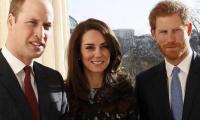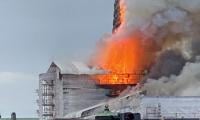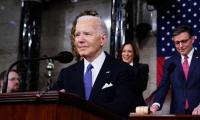RIYADH: A strengthening in Saudi Arabia´s government finances has allowed the kingdom to stop drawing down its foreign assets to cover a budget deficit caused by low oil prices, finance ministry data showed on Thursday.
After oil prices plunged in mid-2014, driving the Saudi state budget deep into the red, the government began liquidating assets held abroad by the central bank to pay its bills. Net foreign assets, which peaked at $737 billion in August 2014, shrank to $501 billion in March this year, raising concern in financial markets about Riyadh´s long-term ability to manage its finances.
But data released on Thursday showed the government had financed its deficit in the first quarter of 2017 entirely with money from its current deposits at the central bank, rather than by selling more foreign assets.
The fiscal improvement was enabled primarily by the increase in oil prices, which stabilised to roughly $50-55 a barrel in the first quarter this year - almost double their level in January 2016."In the first quarter, no debt instruments were used.
Likewise, there were no withdrawals from the state reserves at the Saudi Arabian Monetary Agency," said Hindi al-Sohimi, the deputy minister of finance for budget and organization.
Revenues for the first quarter were 144 billion riyals ($383.96 million), an increase of 72 percent over the same quarter last year, while the deficit narrowed 71 percent to 26 billion riyals.
Finance Minister Mohammed al-Jadaan said the deficit reduction was "very encouraging," although he added he did not anticipate similar results for other quarters this year.
"In general, we do not expect this quarter´s performance to continue in the second, third and fourth quarters, but we expect at the end of the year the budget will balance out and reflect what was announced at the beginning of the year."
Jadaan noted it was the first time the government had released detailed quarterly data for its finances, underlining authorities´ increasing willingness to boost transparency in order to win investor confidence.
Oil brought in revenues of 112 billion riyals in the first quarter, up from only 52 billion riyals last year.
Non-oil revenue crept up only 1 percent, while spending cuts brought expenses down 3 percent to 170 billion riyals, including a 5 percent drop in the compensation of state employees, the government´s biggest single expenditure.
"So far it’s been a good year for oil and so revenues have jumped by 115 percent. At the same time, we need to see what happens on the side of the non-oil exports," said John Sfakianakis, director of the Riyadh-based Gulf Research Centre.
Other non-oil revenues would show up as of the third and fourth quarters of this year, including planned levies that would start being collected in July, said Jadaan.
The Public Investment Fund would show revenues in the fourth quarter, after companies in which it holds investments post dividends, he said.
Pressure on the government´s finances has also eased because it has begun borrowing from abroad, issuing a debut $17.5 billion sovereign international bond last year and a $9 billion sukuk issue last month.
Saudi Arabia´s net foreign assets have continued to fall, shrinking 102.3 billion riyals in the first quarter, according to central bank data.
But with the government no longer tapping foreign assets to fund the deficit, analysts said the drop was due to private sector activity, as Saudi banks and companies exchanged riyals to settle overseas obligations.
Jadaan has previously said the deficit would be covered as much as possible by foreign and local debt issues in the future, with running down reserves to be used only as a last resort.
This initiative enables them to earn a dignified livelihood for their families
The event will host more than 700 booths, including leading global and Pakistani tech giants
Gold rates increased by $8 to all-time high rates of $2,371 per ounce in the international market
Strong retail sales prompted economists at Goldman Sachs to boost their gross domestic product
The IMF dictates its terms based on our past performance
Goldman's profit rose 28 percent to $4.13 billion, or $11.58 per share, in the first quarter







